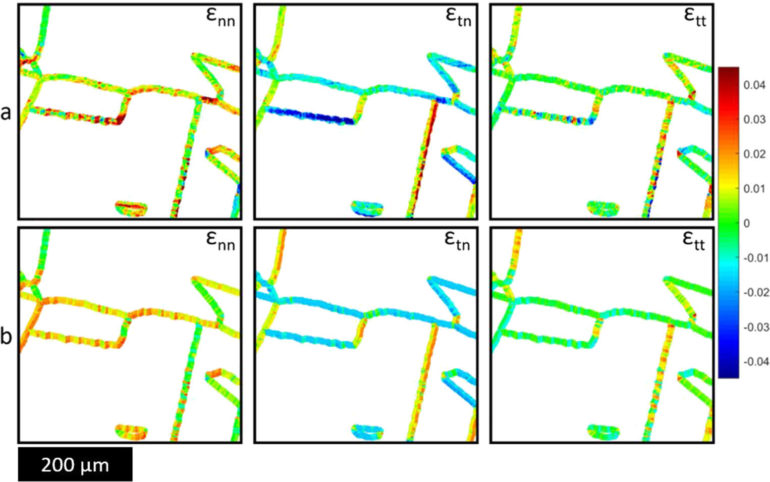To the naked eye, a sheet of stainless steel presents a smooth, polished, homogenous surface. The same material when viewed at 400 times magnification reveals its true jumbled structure—different crystal shapes, joined at wildly different angles. Researchers at the University of Illinois Urbana-Champaign used data from high-resolution images of stainless-steel samples to train neural networks that make predictions about how the material will behave at places where the crystals meet, when strained.
John Lambros explained, when studying the properties of a material such as stainless steel, it is impossible to conduct separate experiments at such high magnifications that subject it to every conceivable parameter—every temperature, every loading angle, every amount of pressure. So we often rely on models.
“Rather than using an extremely detailed and cumbersome physics model with a lot of fitting parameters, we used machine learning to train a neural network to make these predictions,” Lambros said. “Machine learning bypasses the need for a detailed modeling of all of the physics behind the process and makes a sort of direct link, or fitting, between the inputs and the outputs.
“This is the first time this technique has been applied to learn what happens in a metal microstructure under various loading conditions,” Lambros said. “In this case, we wanted to see how much strain accumulated at grain boundaries in a polycrystalline metal during creep.” He explained that creep is the tendency for a solid material to deform under a continual load, much like some bookshelves eventually bend under the weight of the books.
Lambros and his graduate student Renato Vieira began the study with an assumption.
“We believed the physical differences between the two grains adjacent to the boundary would be more important, or at least an equally important parameter. So, the most remarkable finding for me was that one single geometric parameter was able to predict the results 80 percent of the time,” he said. “It’s the geometry —the angle at which you’re loading it that made the most difference. I found that unexpected and interesting— not that it shouldn’t influence the results, but that it did so this dramatically. It was surprising, because it means that all this sophisticated, multi-scale modeling that we do to understand all the physics may be only about 20 percent important.”
Lambros added that this is a preliminary study. “Being the first of its kind, there must be a lot more in-depth studying before we can say this is universally true.”
He noted that it works in cases 70 to 80 percent of the time, but it doesn’t predict the response of all the boundaries everywhere. “This means that there are other factors beyond just the angle that are influencing what is happening. It’s just that this is the most important one, or the first order one.”
Lambros said he wants to ultimately incorporate the technique, and what they’ve learned from it, into existing failure models.
“The machine learning model we have so far only works near the grain boundaries,” he said. “We can’t yet predict what happens in the grain interior. So, number one, we need a different set of inputs that will also work in the interior. We have them experimentally, but we need to develop a different model and fill in the gaps.
“Ultimately, what we want is to be able to just show an image of the microstructure to the algorithm and the algorithm will tell us when and where the material will fail. But, rather than doing one big neural network fit from beginning to end, we’re going to do steps in between that represent the physics behind it and within each step we will make use of machine learning to determine the appropriate inputs and outputs.”
The study, “Machine Learning Neural-Network Predictions for Grain-Boundary Strain Accumulation in a Polycrystalline Metal,” was written by Renato Vieira and John Lambros. It is published in Experimental Mechanics and also appears as the Journal’s cover for the issue.
Team uses AI to predict 3D printing processes
More information:
R. B. Vieira et al, Machine Learning Neural-Network Predictions for Grain-Boundary Strain Accumulation in a Polycrystalline Metal, Experimental Mechanics (2021). DOI: 10.1007/s11340-020-00687-1
Provided by
University of Illinois at Urbana-Champaign
Citation:
Machine learning predicts behavior of stainless steel at the microstructural level (2021, August 24)
retrieved 24 August 2021
from https://techxplore.com/news/2021-08-machine-behavior-stainless-steel-microstructural.html
This document is subject to copyright. Apart from any fair dealing for the purpose of private study or research, no
part may be reproduced without the written permission. The content is provided for information purposes only.


